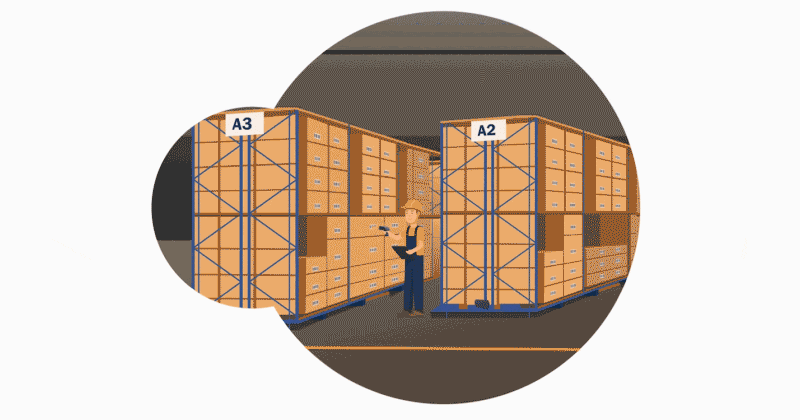On this blog, we have repeatedly discussed the advantages of running and managing your applications and computing resources in the cloud, most thoroughly in a series of posts by my colleague Luciano Cunha. Warehouse management systems (WMS) have become a common cloud application. In the cloud, it’s easy to support distributed warehouse facilities and their processes with great efficiency and consistency. Even companies that have not otherwise embraced the cloud are happily managing their warehouses with cloud-based WMS.
Cloud concerns to keep in mindThe growth of the cloud, including cloud-based WMS, continues as more and more companies take advantage of its scalability, elasticity, resilience, universal accessibility, and manageability. While reduced costs of technology ownership and controlled, predictable costs are still an important factor, they are by no means the only or the most important consideration when businesses take to the cloud.
When you adopt a cloud-based, software-as-a-service (SaaS) model, you need to consider the potential risks as well as the benefits. Possible concerns include:
- Security: From physical to digital infrastructures, leading cloud service providers offer multiple layers of security. However, to be truly secure in the cloud, you need to know what exactly that entails, what your own information protection responsibilities are, and what vulnerabilities remain.
- Compliance: Some countries and industries regulate where and how data is stored, which can be reflected in the encryption and tokenization standards that must be used. Companies need to implement SaaS such that they achieve compliance.
- Performance: Software hosted in a remote data center and accessed through your internet-connected browser may not run at the same level of performance and responsiveness as solutions implemented in your local environment. In addition, internet speeds are not always what you may expect. For these reasons, some computing workloads are better suited than others to cloud computing.
- Viability: The world’s leading cloud providers are likely stable and won’t fail. But if you do business with a startup or a smaller company, there’s a risk that they might fail. What will happen to your data and business processes if a service provider goes out of business or you need to change vendors for another reason? You need to prepare a fallback and exit strategy when you engage with smaller vendors.
WMS and other applications in the cloud typically follow one of two scenarios: multi-tenant or dedicated. What are the differences between them?
Imagine room and apartment rental options. If you rent a micro-studio or a room in a co-housing facility, you may be sharing a kitchen, exercise facilities, or a media room. On the other hand, if you rent an apartment, you won’t need to do so. In the cloud, multi-tenant infrastructures are comparable to your rental in a co-housing building, and the dedicated cloud can be compared to renting your own apartment.
Multi-tenant SaaS for WMS means that a single instance of software is shared among several user companies or tenants. When you subscribe to a dedicated WMS in the cloud, yours is the only organization using an instance of the solution. Now, if you connect these two deployment models with the cloud-related concerns we mentioned, it’s easy to see why analysts like Gartner in its Magic Quadrant for Warehouse Management Systems 2016 would express a preference for the dedicated model. This would make even more sense if a company were to expect significant customization on its WMS.
Mobile WMS capabilities extend ERP in the cloudAs WMS evolved and became more powerful, leading ERP providers like Microsoft integrated warehouse management capabilities into their ERP systems in order to provide complete business infrastructures. That is still the case with Microsoft Dynamics 365 for Finance and Operations Enterprise Edition, which delivers ERP and CRM capabilities on the Microsoft Azure cloud. Transitioning functionality from Microsoft Dynamics AX 2012, Microsoft Dynamics 365 includes feature sets that enable companies to manage and automate their warehouse processes. Many To-Increase solutions are already certified for Microsoft Dynamics 365, and others are going through the process.
Azure is rated highly by analysts and cloud specialists for its effectiveness in facilitating hybrid cloud environments bridging cloud and on-premise data and applications. On Azure, and when deploying Microsoft Dynamics 365, you can decide whether a dedicated or multi-tenant implementation is to your best advantage. Through the cloud and its unlimited access to data and applications, mobility can become strategic and valuable for businesses. That’s why we are making sure our portfolio of mobile solutions works perfectly with Microsoft Dynamics 365. Starting with the mobile logistics app, To-Increase Dynamics Anywhere solutions will integrate fully with Microsoft Dynamics 365 .
We are re-building them on a new, flexible architecture. You will also be able to use the new Dynamics Anywhere Mobility Studio to manage and modify your logistics or any other processes to fit your specific needs. In that way, it will be similar to the AX Anywhere Framework you might have used.




